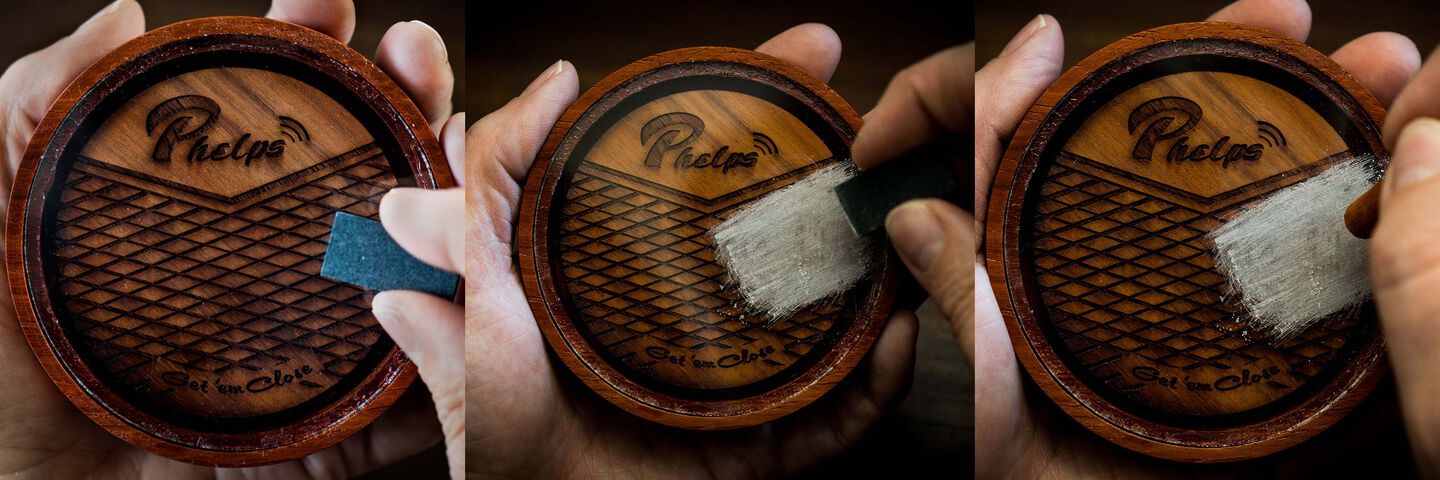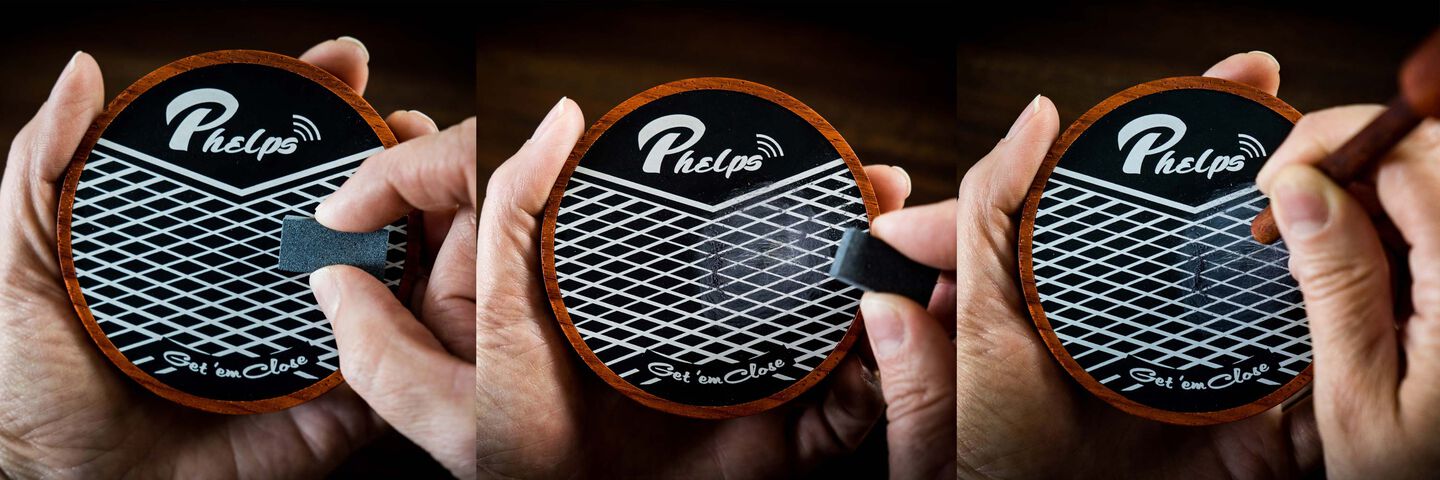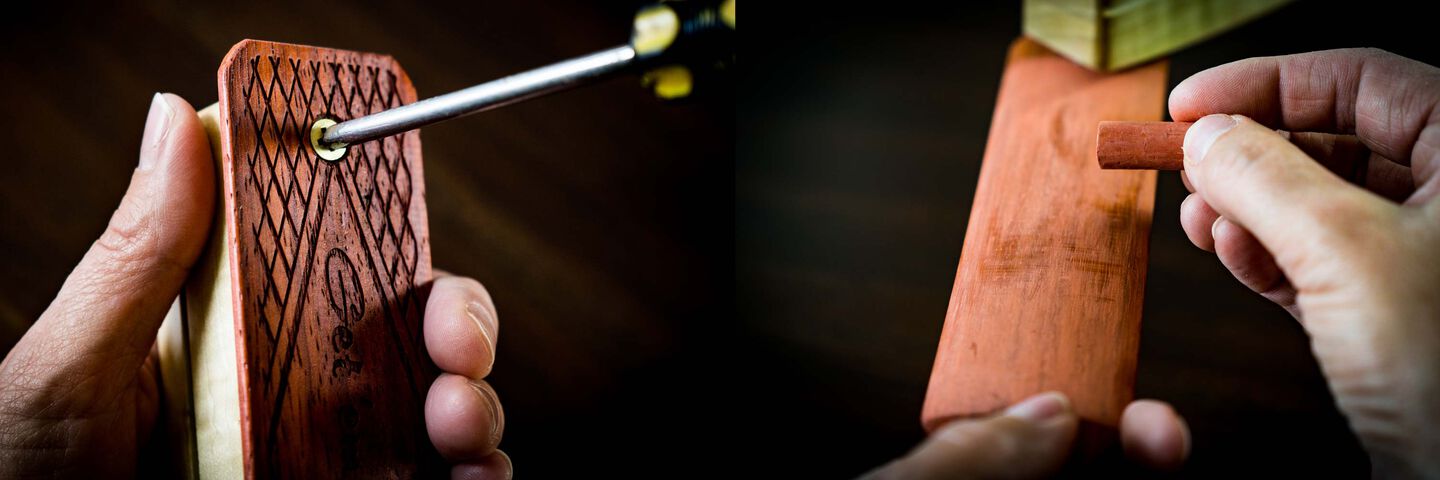


Phelps "How To" Guide
GET 'EM CLOSE BY FOLLOWING A FEW SIMPLE STEPS TO PREP, USE & MAINTAIN YOUR CALLS!
Directions for using your Phelps elk diaphragm:
Place the call in the roof of your mouth (Phelps logo down). Position it where comfortable. With the tip of your tongue placed behind your bottom teeth, roll your tongue up until it touches the latex (keep your tongue as flat and relaxed as possible.)
After taking a deep breath, force air across the latex. While your tongue is against the latex you will start the high note. Drop your bottom jaw so you are applying less pressure to the latex, creating the break over.
For instructions on more specific types of calls, check out some videos from Dirk Durham here.
Directions for using your Phelps turkey diaphragm:
Place the call in the roof of your mouth (cut latex facing up). Position it where comfortable. With the tip of your tongue placed behind your bottom teeth, roll your tongue up until it touches the latex (keep your tongue as flat and relaxed as possible.)
After taking a deep breath, force air across the latex. While your tongue is against the latex you will start the high note. Drop your bottom jaw so you are applying less pressure to the latex, creating the break over.
Directions for prepping your Phelps pot call:
- Use the supplied conditioning stone (for both crystal over Padauk and aluminum over glass) to prepare the playing surface.
- You will want to make a conditioned area about 1 inch by 1 inch. For a right-handed caller, the area will be to the right of center. For a left-handed caller, the area will be to the left of center. Feel free to adjust the conditioned area as needed for comfort and feel.

- For Crystal and Aluminum: Run the conditioning stone in a left to right motion until the crystal/aluminum appears white and frosted.

Directions for using your Phelps pot call:
Once the pot is conditioned, you will run the striker vertically (top to bottom) across the scratches. Make the following calls with the striker in the conditioned area:
- Yelp: (Right-Handed) make continuous “J” strokes. (Left-Handed) make continuous “J” strokes.
- Purr: Lightly drag the striker downward across the pot. Cluck: Use quick top-to-bottom
- High Pitch: Move toward the edge.
- Low Pitch: Move toward the center
Directions for tuning and maintaining your Phelps box call:
Right out of the package, your new box call should sound great and ready to call gobblers. If you would like to fine tune the call’s tone, follow the instructions below
Tuning your box call
- To get a deeper more mature tone from your call, use a phillips screwdriver and turn the screw COUNTERCLOCKWISE ¼ turn and then work the paddle to evaluate the sound. Continue to adjust accordingly for the desired tone.
- To get a sharper, higher pitches turn the screw CLOCKWISE ¼ turn and then evaluate.
- The call can be very finely tuned with less adjustments than ¼ turns. Experiment to find your favorite sound.
Maintenance on your box call
Keep the box DRY! It can sometimes be hard to keep your box dry in spring hunting conditions, but it’s paramount that your call stays dry as it won’t work properly wet.
Keep the call well chalked.
Using the chalk provided, keep a nice thin layer of chalk on the friction surfaces of your call. One piece of chalk should last a couple years when applied correctly.
Keep the call safe.
Though we source the finest materials possible to build our calls, box turkey calls are still a somewhat delicate instrument. Take care when using, and transporting them as they could be damaged from improper or negligent handling.

Directions for using your Phelps box call:
Coming Soon.
Coming Soon.
Happy Hunting!




